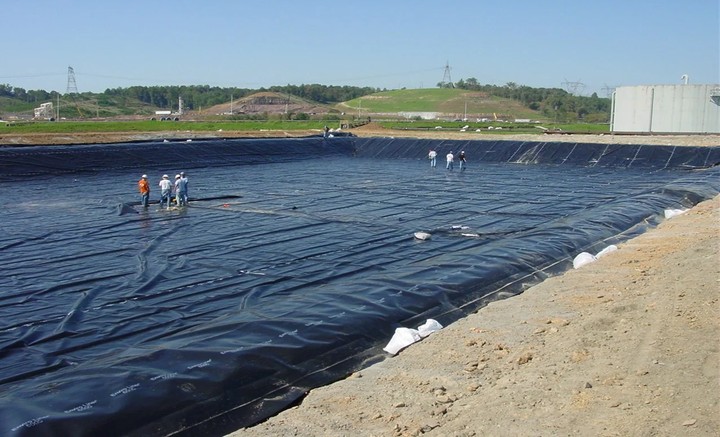Geomembranes are utilized as a key component in the future practice of sustainable engineering. Geomembranes are impermeable sheets that are made from synthetic polymers and will continue to play an increasingly important role in the future.

Current Applications in Sustainable Engineering
Geomembranes have been used in many large fields of sustainable engineering.
They play a very crucial role in restoration procedures in ecology. As an illustration, during wetland restoration, geomembranes have application in creating artificial water-storage structures. Such structures control water levels, and these are extremely important to wetland animals as well as flora for growth and survival. In their role to maintain adequate flow regulation of water and storage, geomembranes restore degraded ecosystems of wetlands, thereby maximizing biodiversity.
Agriculture, especially where water must be conserved, extensively utilizes geomembranes in irrigation systems. They are used as liners for irrigation canals and water storage reservoir liners. Through this, water leakage is greatly reduced and water resources efficiently used in irrigating crops. In arid and semi-arid regions, perennial water shortage being a serious concern, the utilization of geomembranes in farming can create big water savings, reducing water losses and maximizing the overall farm yields.
The Role of Geomembrane Production Facilities
Geomembrane manufacturing facilities constitute the central part of the geomembrane value chain. Such facilities have the most advanced manufacturing technology. State-of-the-art manufacturing processes, such as precision extrusion and specialty molding processes, are used to produce geomembranes with extremely specific physical and chemical properties. High-quality products are guaranteed through the implementation of strict quality controls at every stage of the manufacturing process. Each production lot of geomembranes is stringently tested, for example, permeability tests, durability tests, and environmental stress resistance tests. With such excellence in quality control, geomembrane factory ensures that geomembranes meet the stringent requirements of a broad variety of sustainable engineering applications.
Functions of Geomembrane Distributors
The geomembrane distributors are the critical connection between final customers and manufacturing locations. The distributors understand the market very well and are responsible for geomembrane sales as well as wholesale geomembranes. Different sectors such as environment protection, infrastructure construction, and industrial constructions require different applications for geomembranes. The distributors are responsible for buying the best geomembranes from various production facilities and distributing them among the customers. They also provide valuable technical advice, such as advice on selecting an adequate geomembrane based on the specific needs of a project, and support for installation and maintenance after installation. For example, in heavy infrastructure projects, distributors can recommend geomembranes with specific strength and elasticity characteristics to withstand the specific stressing conditions at the project location.
Future Perspective
The future of geomembranes in sustainable engineering is promising. As global awareness of environmental protection continues to increase and the need for resource-conserving solutions continues to rise, the demand for geomembranes will skyrocket.
Development in new industries
New areas of application can emerge in new industries. In the rapidly developing field of carbon capture and storage (CCS), geomembranes can be used to line reservoirs for stored CO2. Their impermeable nature guarantees that CO2 is prevented from seeping back into the atmosphere, and play a crucial role in the long-term success of CCS operations. In waste-to-energy power plants, geomembranes are used to confine waste disposal facilities and prevent the escape of toxic gases and leachate. This not only ensures the safe operation of the plant, but enables compliance with stringent environmental controls.
Advances in materials science
Advances in technology in the area of material science will lead to the development of more advanced geomembranes. The next-generation materials can be anticipated to perform better in terms of longer life, enhanced capability to work under harsh conditions, and more environmental sustainability. For example, research is underway to develop self-healing geomembranes. These membranes have the capability to heal small holes or cracks on their own, significantly extending their lives and reducing replacement needs. Another area of interest is the development of more chemically resistant geomembranes, especially for industrial applications when they may be exposed to a variety of corrosive chemicals.
Increasing Industry Cooperation
Factory houses that produce geomembranes will continue to make R&D investments that allow these new products to reach the market. There will be more and more coordination between factory houses, research labs and consumers. This collaboration will enable geomembranes to be designed to suit specific project specifications. For example, in large projects of high-speed rail development in sensitive environments, project developers, scientists and producers can come together to design geomembranes that are not only highly waterproof and durable, but also have minimal or zero environmental impact while and after the project is conducted.
Geomembrane manufacturers need to synchronize with such emerging technologies in order to have the latest and relevant geomembranes to cater to the changing demands of various sectors.
In brief, geomembrane is an indispensable part in green engineering. And it is highly promising in the future. We are one of the largest geomembrane manufacturers in China and hope to cooperate with you.
